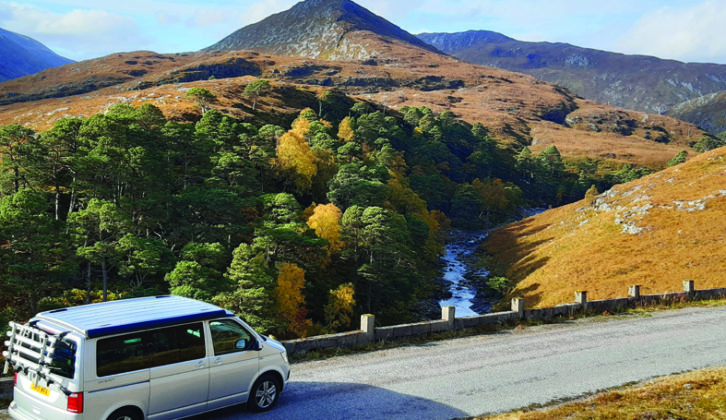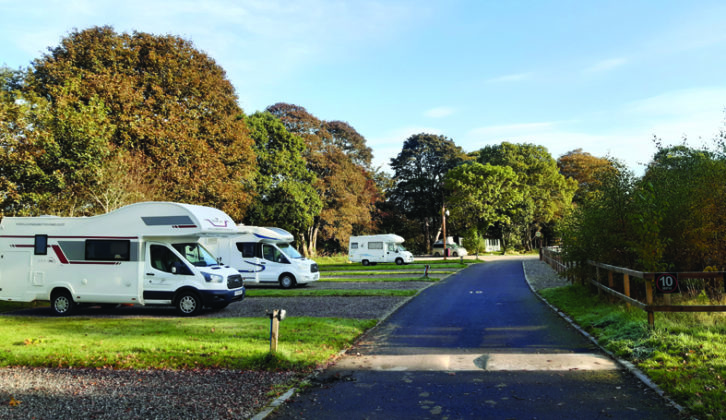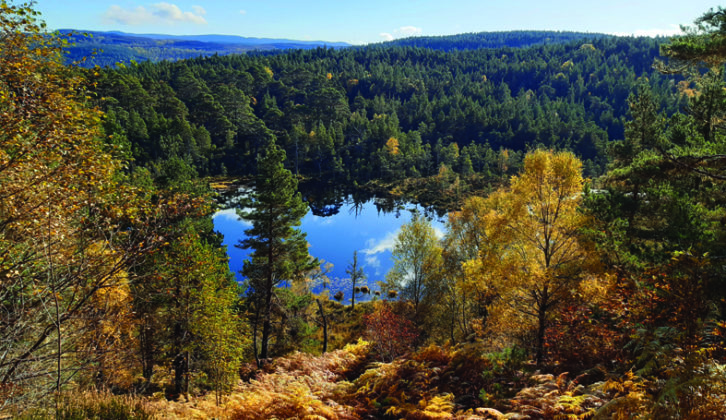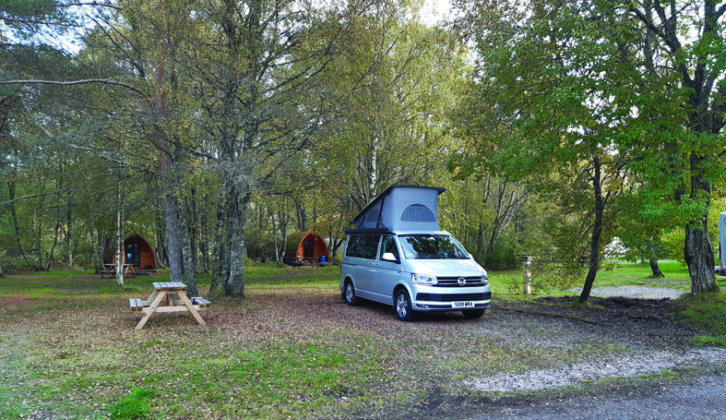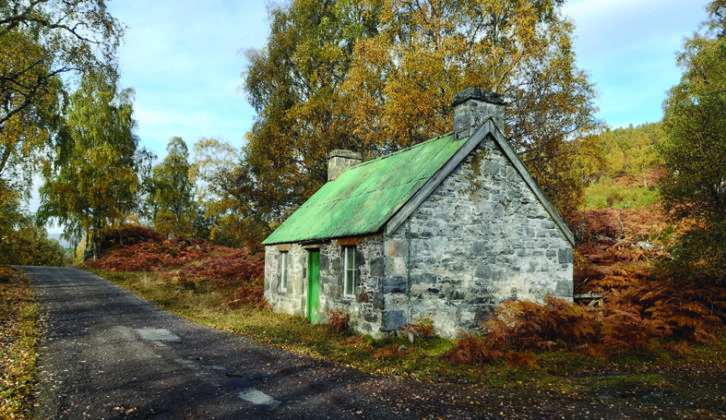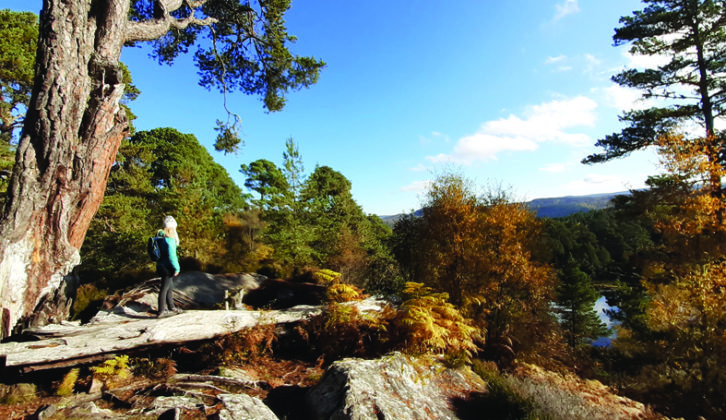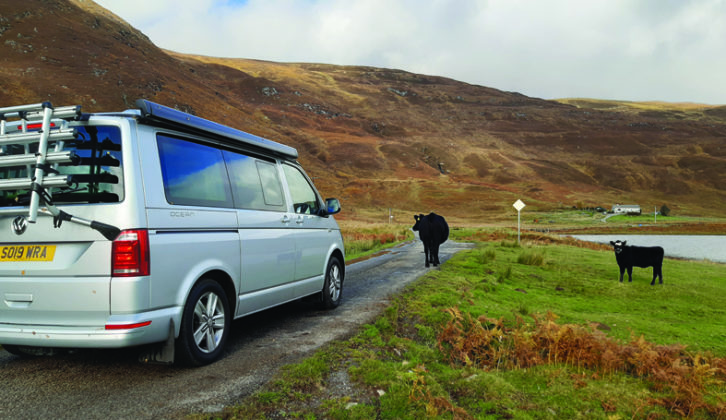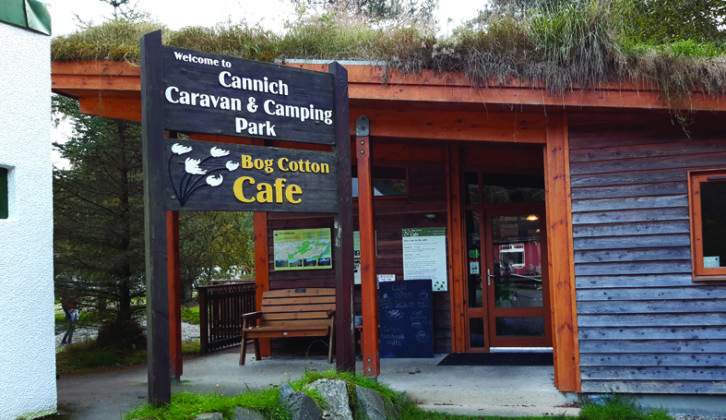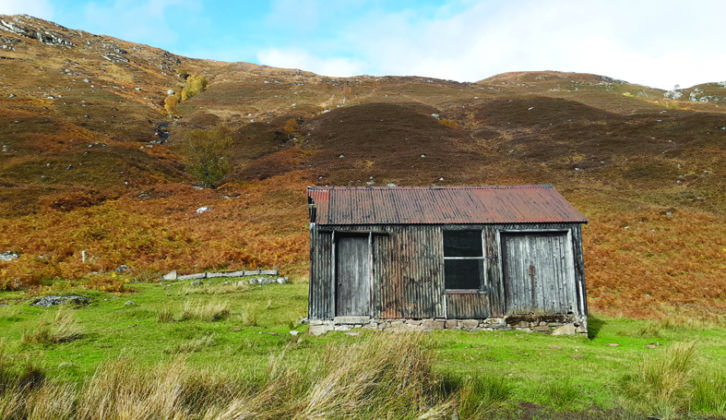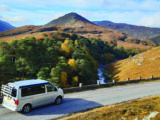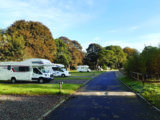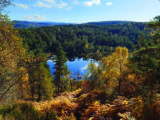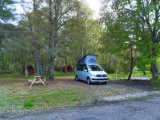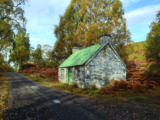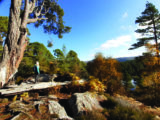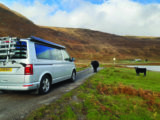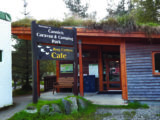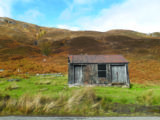Ancient Caledonian pine forest, heather moorland, mountains and glistening lochs dotted with islands – these have helped to earn Glen Affric its reputation as Scotland’s most beautiful glen.
Strathglass (‘strath’ meaning a broad valley in Gaelic) takes in three remote glens – Glen Strathfarrar, Glen Affric and Glen Cannich. Our plan was to tour them by VW California, taking our time to soak up the scenery and solitude.
And what better time to visit one of the last remaining fragments of ancient Caledonian pinewoods (the third largest in Scotland) than in full autumn colour? October is a great month to tour; the midges have gone and its blissfully quiet – we practically had the place to ourselves, but the occasional roar of rutting stags.
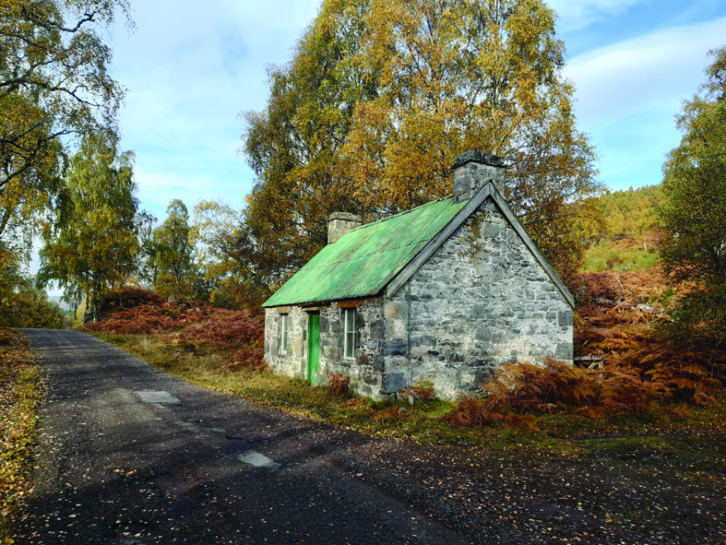
Our wheels were a new VW California camper, from Edinburgh’s Clark Commercials, which has a ‘try before you buy’ offer. Driving rather like a normal car, the California is ideal for negotiating windy single-track roads and nipping into passing places with ease.
Cruising into a campsite late in the day was also no drama; simply press a button and the electric roof lifts up and our children’s ‘upstairs’ bed is ready. The fully charged leisure battery can run lights and heating overnight, ideal for impromptu wild camping.
Past Loch Ness
For those travelling from the south, we would recommend taking the opportunity to gear up at large outdoors retailer Tiso (on the A9 as you bypass Perth), and have a bite to eat at the café. Glen Affric is a four-hour drive from Edinburgh, so to break the journey, we chose an overnight stop at the pretty village of Fort Augustus.
We whiled away a sunny afternoon eating ice cream, overlooking the canal, watching boats manoeuvre the stepped locks. For a meal, try the canalside Bothy Bar, a cosy watering hole that serves traditional Scottish pub fare.
A short stroll away is the family-friendly Loch Ness Highland Resort campsite, a flat field with a football pitch, basketball hoop and lots of space for children to run around or ride their bikes.
The shower block has the luxury of underfloor heating, and Papa G’s restaurant has recently opened for all-day dining.
Next day, in the early morning mist, we spotted a pine marten disappearing into the bracken.
Camping in Cannich
We drove up Loch Ness (our children glued to the camper van windows looking for the monster), via a short stop at the Loch Ness Exhibition and impressive Urquhart Castle. However, for us, the drive to Cannich was the showstopper – a blaze of yellow, orange and amber leaves that looked like an Impressionist painting.
Cannich – a hamlet with a Spar shop/post office, a pub/restaurant and a shinty club that dates back more than 125 years – is a sensible base to explore the Glen Affric and Strathglass area.
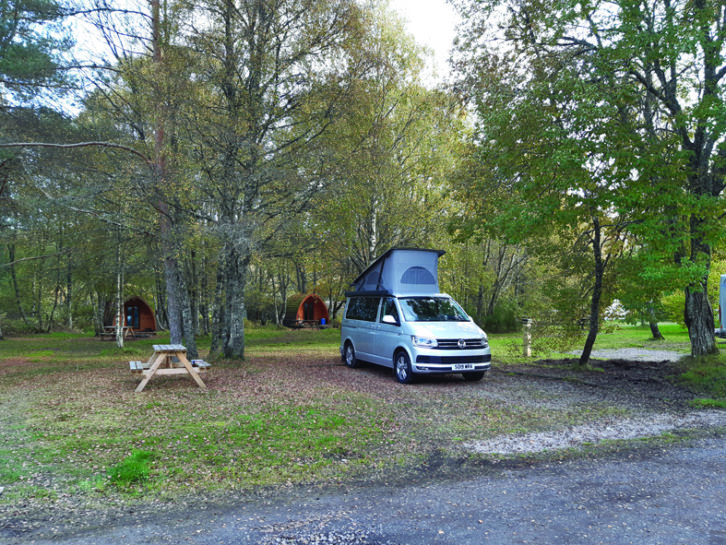
Sheltered by the surrounding hills, Cannich Woodland Camping is dotted with Scots pine and silver birch trees and feels very peaceful. The chirping of birds and the curl of wood smoke from a clamping hut barbecue gives it a village feel.
It’s worth noting that Glen Affric is not the kind of area you’d wild camp; there are ‘no overnight stays’ signs at popular walk car parks. Besides, there are so many incredible walks and being opportunities in the are, we’d recommend a longer stay at the site. There’s even a turf-roofed on-site cafe with fresh home baking.
Our children enjoyed the playwark, while site owner Matt Jones, an outdoors enthusiast and mountain biker who organises the annual Glen Affric Duathlon, advised us on local walks.
“Glen Affric attracts nature lovers because it’s the largest tract of ancient Caledonian forest left in Britain,” he says. “It has a true wilderness feel and is really special. It’s like going back in time to a land that doesn’t exist anymore.”
Villages and waterfalls
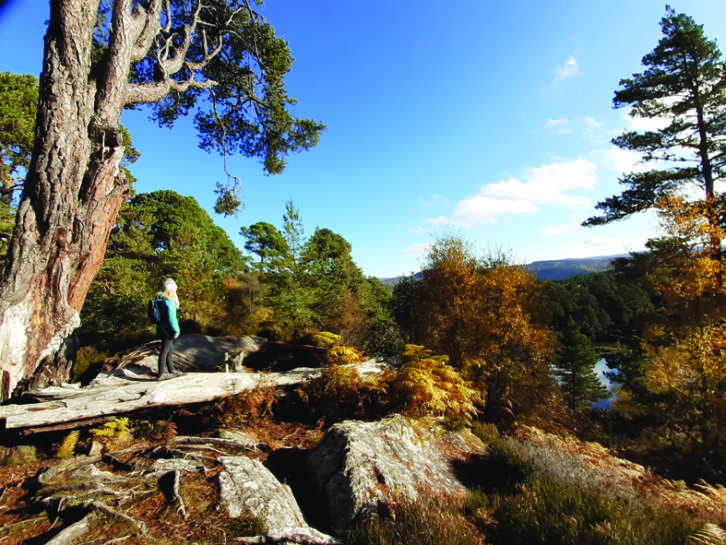
If towering waterfalls appeal two short walks, to Dog Falls and Plodda Falls are a must. On the way to Plodda Falls, you can also see the Tomich Victorian model conservation village, which has a small country house hotel, post office, café, bike hire and a swimming pool.
Look out for rare flora and fauna, and interesting history – the golden retriever was first bred here, by Dudley Marjoribanks, 1st Baron Tweedmouth; don’t miss the commemorative statue!
A marked pathway weaves through Scotland’s tallest Douglas fir trees (used for the masts of Captain Scott’s ship, RRS Discovery, now berthed at Dundee), emerging at the 40ft Plodda Falls, the area’s highest, most spectacular waterfall.
Natural attractions
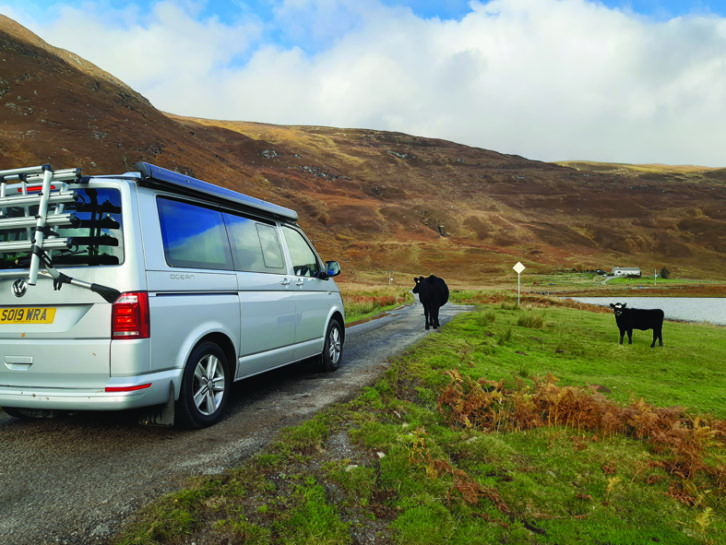
Part of Glen Affric’s appeal is that it’s so remote. A single-track road with passing places winds through the glen, and the River Affric runs along its length, passing through Loch Affric and Loch Beinn a’ Mheadhoin. The road stops at the end of the latter loch – beyond this, only footpaths continue into the glen. The fact that mobiles don’t work here only adds to the allure!
It’s popular with hikers, climbers and mountain bikers; many Corbetts and Munros are accessible from Glen Affric, and the Affric Kintail Way is a 73km, four-day walk from Drumnadrochit, on the shores of Loch Ness, to Morvich in Kintail, via Glen Urquhart and Glen Affric.
The next morning, sunshine glowed through the vibrant yellow and gold autumn leaves against a backdrop of clear water and electric-blue sky. Our first walk in the spectacular Glen Affric National Nature Reserve was to Dog Falls, which starts at a car park with a composting toilet.
We walked in glorious sunshine, the air still, bar the odd leaf fluttering down. We clambered up the side of a rocky river, over narrow wooden bridges and past wild swimming pools.
The trail continued through an earthy-scented pine forest and along a twisting, rocky footpath – a scramble, which delighted our children. Later, we stopped to enjoy our picnic by a lochan (small loch) in the warm sun.
Glen Affric is home to rare birds of prey, such as the golden edge, osprey and hen harrier, plus otters, wildcats and pine marten. It was still and silent, except for a lively yellow tit in the pines beside us. We met not a soul on the entire walk.
We drove on to the end of the glen, each bend of Glen Affric’s single-track road revealing more impossibly beautiful views,. By now, we could see the peaks of Munros baking in the blazing sun against a cornflower-blue sky.
Cars are left at the last River Affric car park and it’s a long walk by road (well suited to cycling). It ends at a scene recognisable from postcards, a stone cottage framed by craggy Scots pines, overlooking Lovh Affric, which today reflects the mountain peaks like a mirror.
We stood, mesmerised, watching an osprey that was circling above. The only disappointment was the high deer fence that blocked access to the water.
Lochs and landscapes
Glen Cannich is wild and remote, with a sense of solitude, although at the foot of Loch Mullardoch is the largest hydro-dam in Scotland.
Aside from Mullardoch House, built as a hunting lodge in 1912, and the odd holiday cottage, the glen is sparsely populated. It’s uninhabited to the west of the dam, where ruins of settlements can be seen, once the home of Clan Chisholm, before people were cleared to make way for sheep.
The surrounding rust-coloured bracken hills are known as a great place to spot red deer (we saw several at close quarters), golden eagle and adders on the grassy slopes. The quiet road to the dam would make a good cycle trip.
That night, we stayed at Beauly Holiday Park, where the Wi-Fi was a bit unpredictable and we had just missed the opening of an impressive new timber-clad shower block.
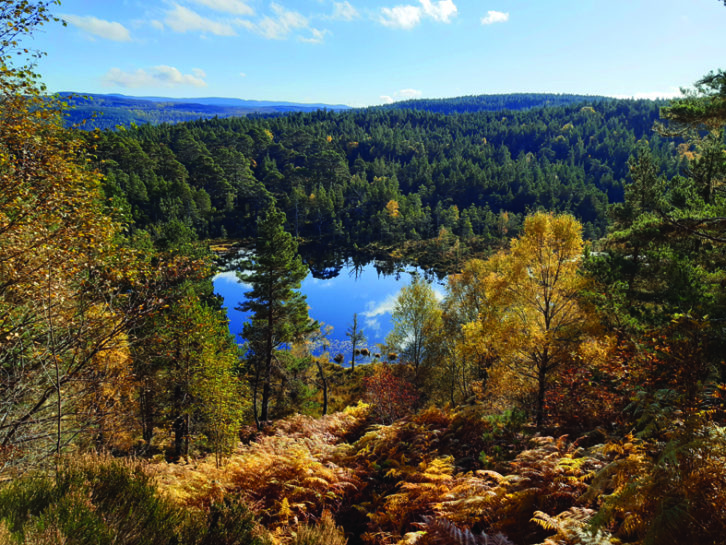
Near Glen Cannich is the Aigas Field Centre, owned by the distinguished conservationist, natural and nature writer Sir John Lister-Kaye. Once a Victorian sporting estate, it was bought by Sir John in the 1970s and developed as a conservation centre. Today, it runs adult wildlife holidays, education programmes for children, a wildcat breeding programme and a beaver project.
Visitors to the centre can enjoy a nature-based holiday, superb food, and wildlife spotting from the hides. It has also been featured on the BBC’s Autumnwatch and Winterwatch.
Biking and hiking
We are planning to return here one day soon, to explore the fabulous Aigas Gorge by canoe, a magical experience paddling past 100ft-high cliffs in still peat-black water, with the chance to see ospreys on the wing.
One of the more startling sights must be the fairy-tale mansion built on an island, part of the 545-acre Eilean Aigas Estate, said to have been bought for £7 million by the Qatari royal family.
To reach the final, most northern of the three glens, it’s best to arrive early. The 17-mile road along Glen Strathfarrar is private, with a limited number of motor vehicles allowed access. You’ll need to knock on the gatekeeper’s cottage door to ask for the gate to be unlocked. The upside is that the lack of cars makes this trip a fantastic cycle.
Overgrown birch and pinewoods, outcrops of cliffs, boulders, rocky rivers and deer tracks make this an adventurer’s paradise. A deep gorge leads to the Manor hydro-dam (fiercely resisted by locals and conservationists), the largest arch dam in Britain. Beyond lies Loch Monar, fringed by Munro peaks and flourishing deer forest.
We could have spent all day pottering around in the wilderness. Our children saw a kestrel, and whiled away hours following a rocky stream, playing in pools and searching for gold.
Our relaxed journey home took us via two sites worth noting, albeit in less wild settings. The first, Oakwood Caravan & Camping Park was reached via Inverness and the Cairngorms. Part of a farm, the campsite was built from scratch two years ago and is ideally located, just a stroll away from the famous year -round outdoor restoration at Aviemore.
The site’s showers were excellent, while the heated reception area with table football kept the children occupied – as did our gravel pitch near the playwark and covered outdoor seating area.
Heading for home
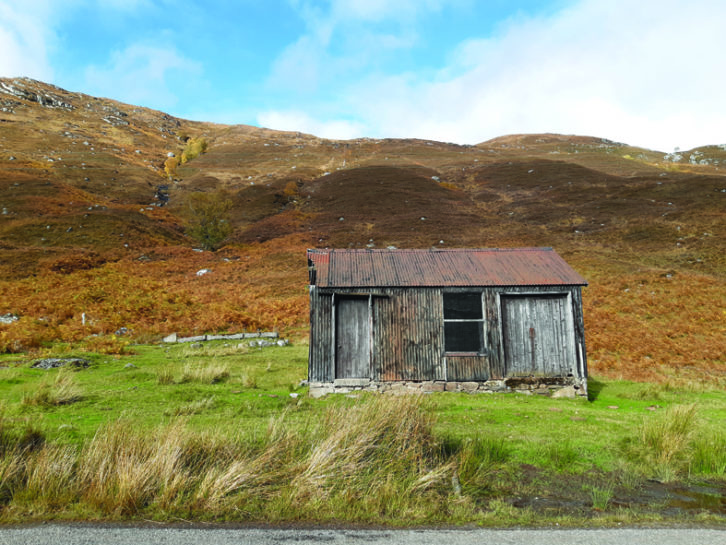
Our final campsite was chosen so that we could enjoy the walk around Loch Faskally, passing the fish ladder (a structure to aid migrating salmon) and Pitlochry Festival Theatre.
Blair Castle Caravan Park, in Pitlochry, is a nine-acre family site, with heated toilet/shower blocks, two play parks and a games room with pool tables, table football and table tennis – we had to bribe our children to leave. But despite their new addiction to pint pong, their faces lit up as they recalled seeing ospreys, waterfalls and rocky streams in the fresh mountain air.
TOUR ESSENTIALS
WHERE WE STAYED
Loch Ness Highland Resort
- Fort Augustus, PH32 4BG
- Web www.lochnesshighlandresort.com
- Open March-November
- Charges Electric pitches on gravel, £25 per night (two adults, two children).
- Large field with football pitch, basketball hoop, clamping, modern shower block, on-site shop and all-day dining at Papa G’s.
Cannich Woodlands Camping
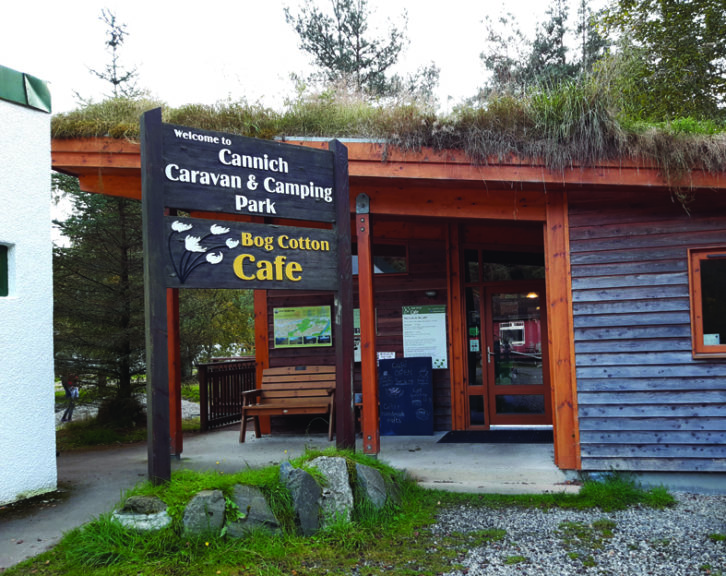
- Strathglass, N4 7LN
- Web www.highlandcamping.co.uk
- Open March-November
- Charges Electric pitches on gravel, adults £9, children five to 15 years £5, pets free.
- Quiet site with grass and gravel pitches in woodland. Glamping pods with fire pits, free WiFi, chemical waste, hot showers, café, laundry, sitting room with TV, play park and mountain bike hire.
Beauly Holiday Park
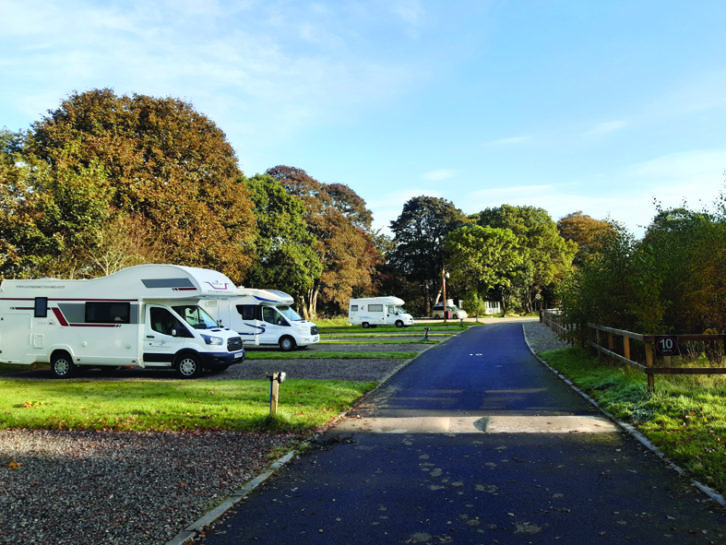
- Beauly, IV4 7RY
- Web www.beaulyholidaypark.co.uk
- Open All year
- Charges Gras pitch £19, hardstanding £22, WiFi £2.75 per 24 hours
- Alongside river Beauty and historic Love Bridge, park has 75 electric pitches, new shower and toilet block, chemical waste disposal, central fire pit BBQ area, play park, six-acre nature reserve with ponds, paths and river view points.
Oakwood Caravan & Camping Park
- Aviemore, PH22 1QD
- Web www.oakwoodcampingpark.co.uk
- Open All year
- Charges Hardstanding electric pitch, £25 per night (two sharing), children five to 17 years £1.50, gate security deposit £5, free WiFi in reception.
- Opening in August 2018, this campsite in a field of oak trees is walking distance from Aviemore. New toilet and shower block, outside dishwashing area, laundry, covered outdoor seating, playwark, outdoor table tennis, pets on leash.
Blair Castle Caravan Park
- Blair Atholl, PH18 5SR
- Web blair-castle.co.uk/caravan-estate
- Open March-19 November
- Charges Hardstanding electric pitch (two people sharing, £25, additional guests (aged five years or more), £3, dogs £2
- Nine-acre park with heated toilet/shower blocks, dishwashing area, laundry, football pitch, play parks, games room with table football, table tennis, pool table, TV. Beauty treatments, Segway and bike hire.
FIND OUT MORE
Motorhome hire cost for Volkswagen California £150/125 per night (high/low season), 10% deposit at time of booking.
- Clark Commercials (motorhome hire)
- Aigas Field Centre
- Glen Affric Duathlon
- Dog Falls and Plodda Falls walks
- Loch Affric walk
If you liked this… READ THESE:
10 fantastic spots for wildlife encounters
If you’ve enjoyed reading this article, why not get the latest news, reviews and features delivered direct to your door or inbox every month. Take advantage of our brilliant Practical Motorhome magazine SUBSCRIBERS’ OFFER and SIGN UP TO OUR NEWSLETTER for regular weekly updates on all things motorhome related.
We stood, mesmerised, watching an osprey that was circling above
